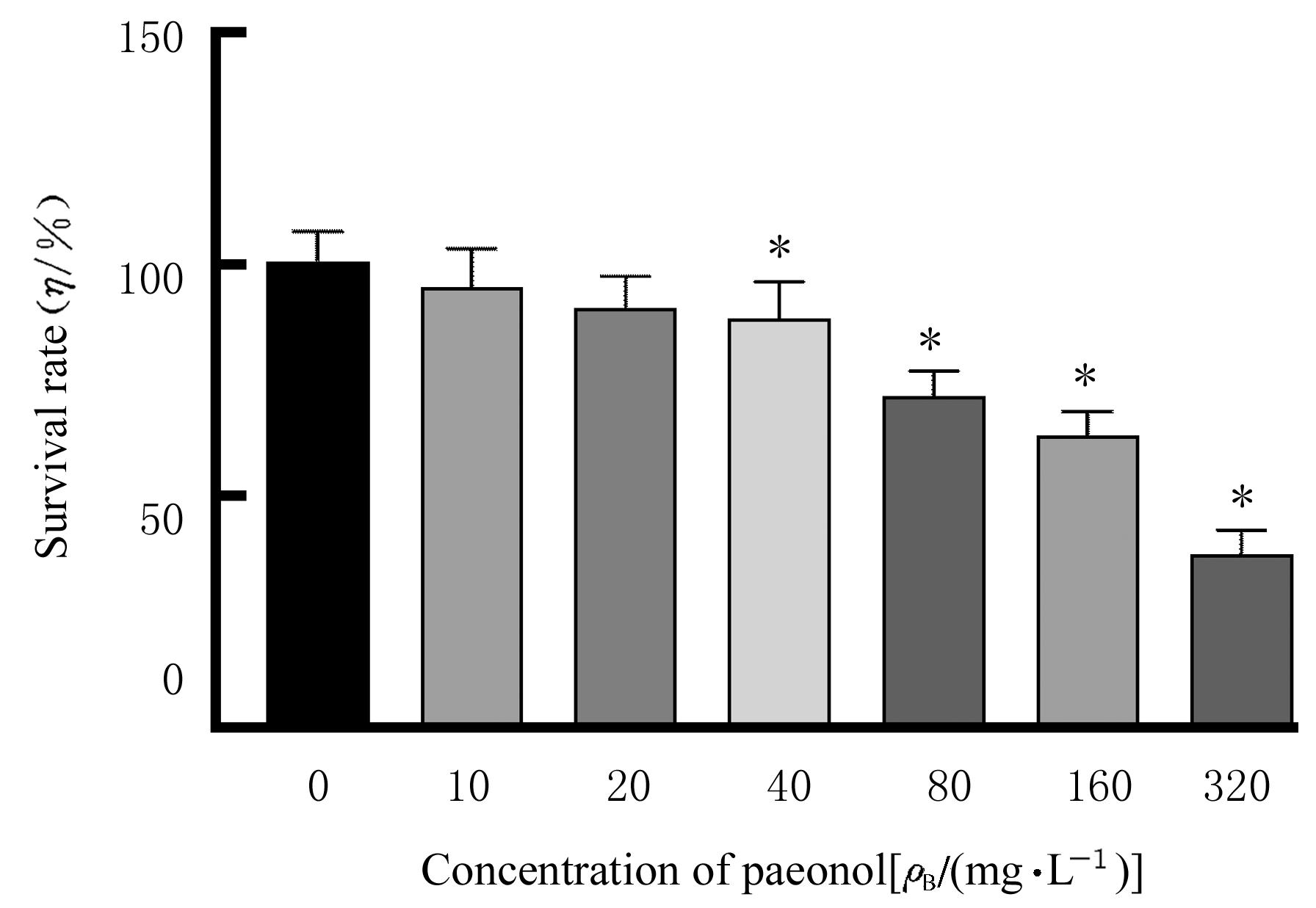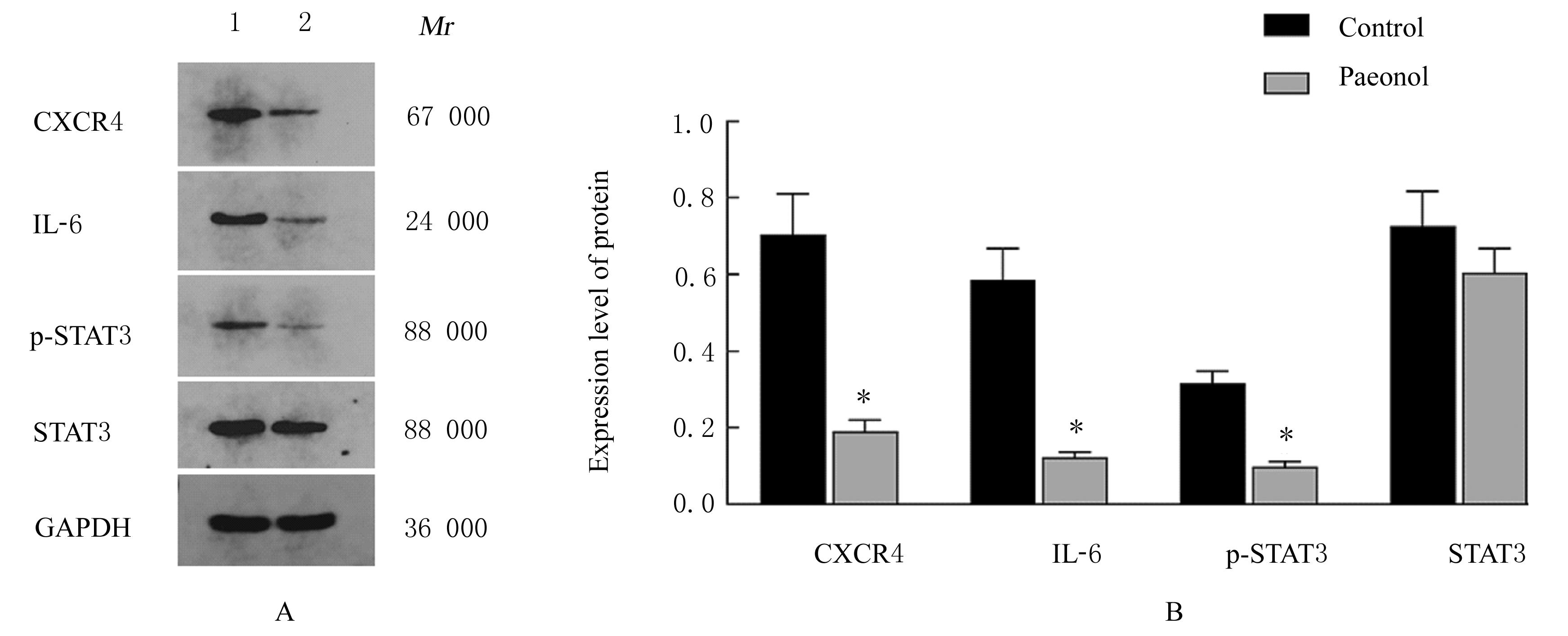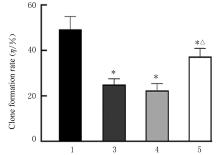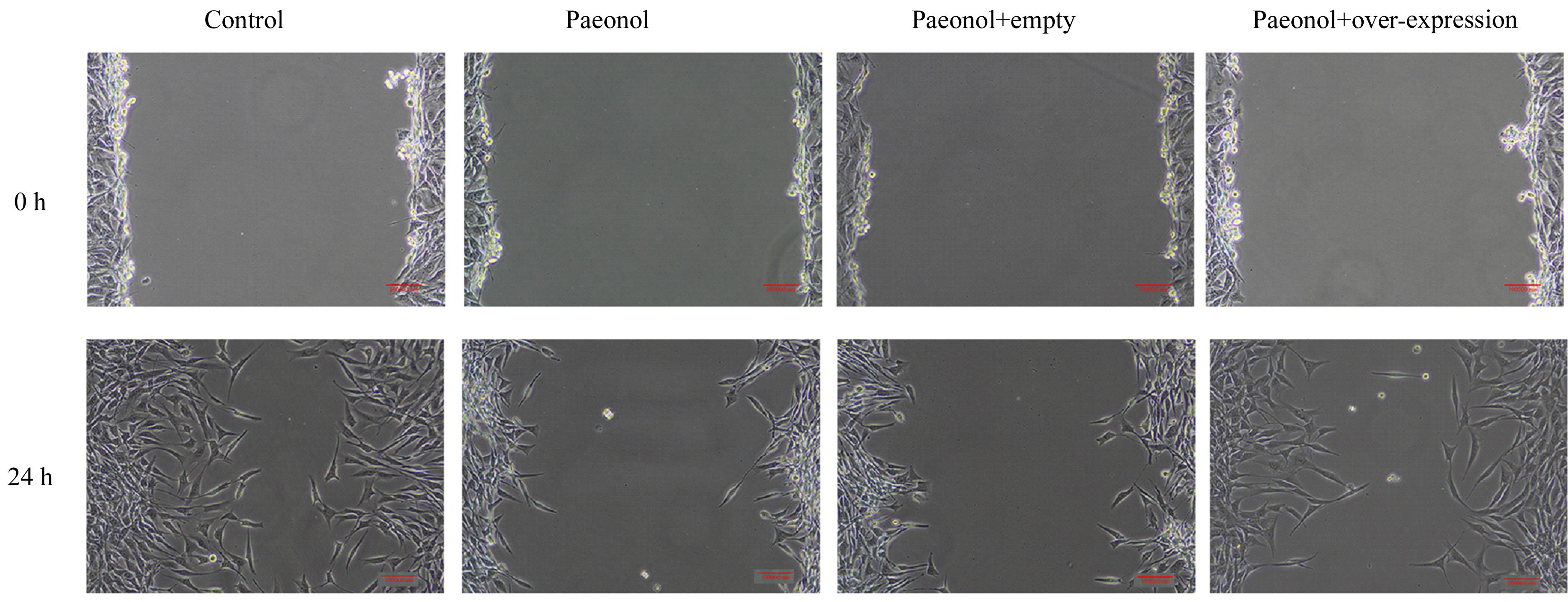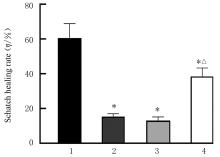吉林大学学报(医学版) ›› 2023, Vol. 49 ›› Issue (5): 1202-1209.doi: 10.13481/j.1671-587X.20230513
• 基础研究 • 上一篇
丹皮酚对人骨肉瘤MG-63细胞增殖、迁移和CXCR4/STAT3通路的影响
- 1.湖北中医药大学临床技能实训中心针骨实验室,湖北 武汉 430000
2.湖北中医药大学附属医院 骨科,湖北 武汉 430000
Effect of paeonol on proliferation, migration, and CXCR4/STAT3 pathway of human osteosarcoma MG-63 cells
Qi WU1( ),Jianfeng CHEN2,Hao LI2,Feng WEN2
),Jianfeng CHEN2,Hao LI2,Feng WEN2
- 1.Needle Bone Laboratory,Clinical Skills Training Center,Hubei University of Traditional Chinese Medicine,Wuhan 430000,China
2.Department of Orthopaedics,Affiliated Hospital,Hubei University of Traditional Chinese Medicine,Wuhan 430000,China
摘要:
目的 探讨丹皮酚对人骨肉瘤(OS)MG-63细胞增殖、迁移和趋化因子受体4(CXCR4)/信号传导与转录激活因子3(STAT3)通路的影响,并阐明其可能的作用机制。 方法 体外培养MG-63细胞,分为对照组(不给予药物干预)和不同浓度丹皮酚组(给予10、20、40、80、160和320 mg·L-1丹皮酚)。采用CCK-8法检测各组细胞存活率并选择半数抑制浓度(IC50)值作为后续实验药物浓度。将MG-63细胞分为对照组和丹皮酚(215.8 mg·L-1)组,采用Western blotting法检测各组细胞中CXCR4、白细胞介素6(IL-6)、磷酸化STAT3(p-STAT3)和STAT3蛋白表达水平。将MG-63细胞分为对照组(不给予药物干预)、丹皮酚组(给予215.8 mg·L-1丹皮酚)、丹皮酚+空载组(给予215.8 mg·L-1丹皮酚+空载质粒)和丹皮酚+过表达组(给予215.8 mg·L-1丹皮酚+CXCR4过表达质粒)。采用细胞划痕实验检测各组细胞划痕愈合率,克隆形成实验检测各组细胞克隆形成率,Western blotting法检测各组细胞中CXCR4、IL-6、p-STAT3和STAT3蛋白表达水平。 结果 与对照组比较,40、80、160和320 mg·L-1丹皮酚组MG-63细胞存活率降低(P<0.05),丹皮酚IC50值为215.8 mg·L-1。与对照组比较,丹皮酚(215.8 mg·L-1)组MG-63细胞中CXCR4、IL-6和p-STAT3蛋白表达水平降低(P<0.05)。与对照组比较,丹皮酚组和丹皮酚+空载组MG-63细胞划痕愈合率及细胞克隆形成率降低(P<0.05),细胞中CXCR4、IL-6和p-STAT3蛋白表达水平降低(P<0.05);与丹皮酚组比较,丹皮酚+空载组MG-63细胞划痕愈合率、细胞克隆形成率和细胞中CXCR4、IL-6、p-STAT3及STAT3蛋白表达水平差异无统计学意义(P>0.05);与丹皮酚组比较,丹皮酚+过表达组MG-63细胞划痕愈合率和细胞克隆形成率升高(P<0.05),细胞中CXCR4、IL-6和p-STAT3蛋白表达水平升高(P<0.05)。 结论 丹皮酚能抑制MG-63细胞的增殖、迁移和克隆形成,其机制可能与调控CXCR4/STAT3信号通路有关。
中图分类号:
- R273

